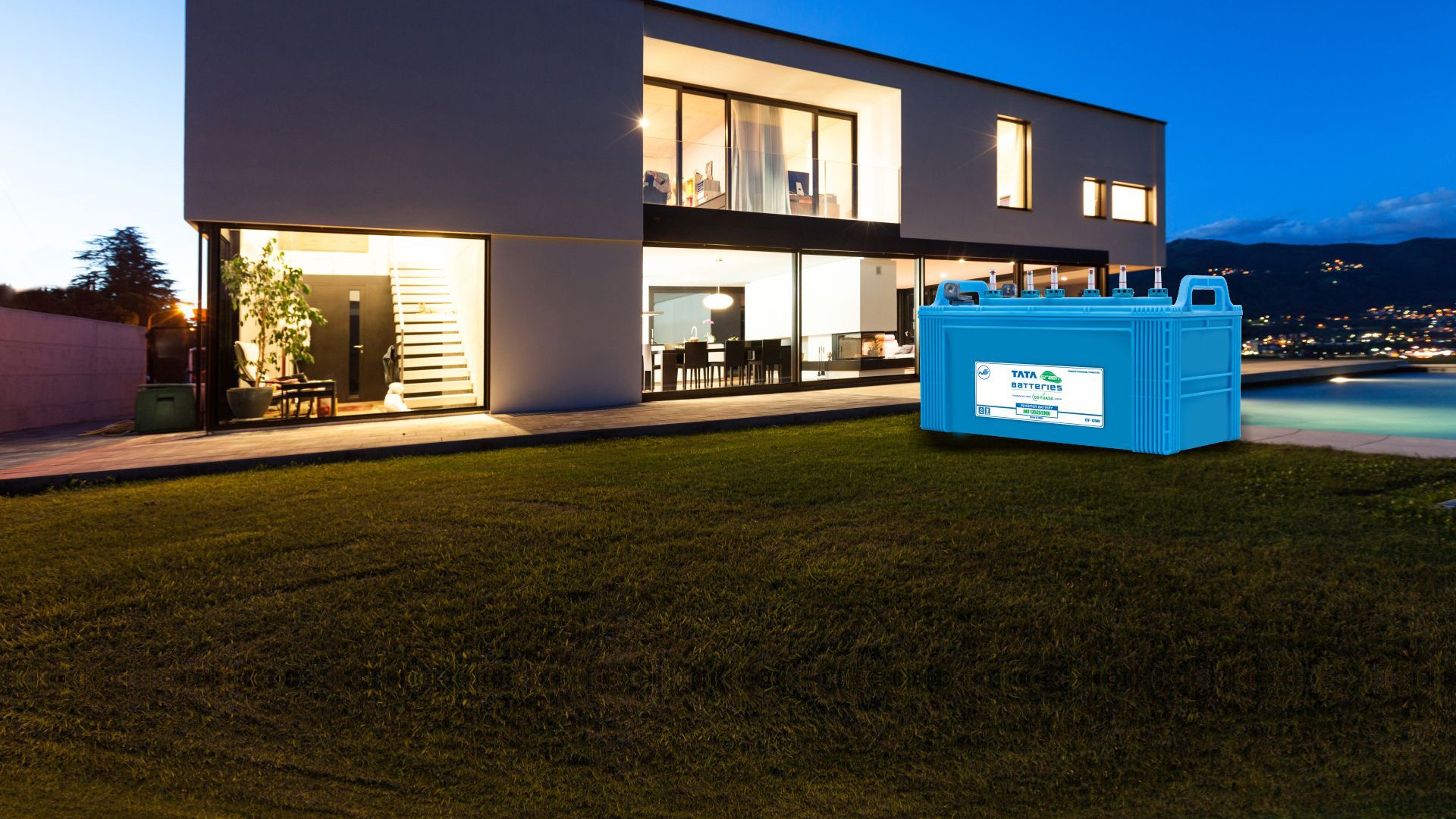TECHNOLOGY
Maintaining Your Inverter: Best Practices For Long-Lasting Performance

Extreme temperatures influence your daily routine, right? Then how come the power source during outages will be unimpacted by its havoc? With inverters designed to serve as an energy storage function, high temperatures can reduce performance, accelerate fluid evaporation, and shorten their lifespan. Heavy investments in inverter repair are the last thing you need. So, let’s ensure you have the efficient inverters at your side while avoiding issues with these maintenance tips.
Best Practices for Inverter Maintenance
Remember that inverter health is influenced by how you handle and manage both the inverters and their battery. Here is how you can ensure the best of it:
Regular Cleaning and Inspection
This is a simple, boring, yet most important part. Regular cleaning must be accompanied by an inspection of both the inverter and its battery. The cleaning should ensure the thorough removal of dust particles, rust, or corrosion that may impair the inverter’s functionality and connectivity, as well as the battery’s charging and discharging capabilities. Also, inspect for damaged connections and casing disfiguration. The leaks, presence of sparks, smell, and abnormal noise must also be taken into account.
Monitor Water Levels
It is the battery-specific maintenance tip. The lead acid batteries of inverters comprise flat lead plates submerged in an electrolyte pool, where the latter consists of water and sulfuric acid. You need to be well aware of the quantity or level of distilled water in the battery. It influences the functionality and battery lifespan.
Proper and Mindful Charging
Following an optimal routine to charge the battery should be a common practice. It means to avoid overcharging and undercharging. The best practice here would be to:
- Completely charge the battery before first use or if it has been unused for an extended period. It contributes to efficient battery activation and performance.
- Ensure regular battery charge without keeping it idle for long to prevent self-discharge and sulfation
- Use the right charging equipment for a secure and quality charging process
- Prevent overcharging to prevent issues such as gassing, overheating, or battery swelling. The further consequences include swelling, leakage, or explosion
- Prevent undercharging, which may otherwise lead to sulfation, freezing, or battery stratification
Tip: The best tip here is to ensure the presence of charging equipment that is compatible with both the inverter and battery. It should be marked by the same voltage and current ratings.
Preventing Electric Surges
The scenario is common after power blackouts, during thunderstorms, and due to electrical malfunctions. The sudden surge in voltage may compromise the inverters by causing component failure, which leads to the requirement of costly repairs.
Hence, it is recommended to install surge protection devices. Select the ones that are compatible with the specific inverter and battery you use by checking the rated power capacity. Also, inspect them after a major surge event to ensure their functionality.
Proper Ventilation
This is another crucial step in achieving efficient battery performance over time. The heat generated by the inverter and battery operation requires an escape route to prevent it from building up and impacting the sensitive parts of the equipment. It is possible with adequate ventilation.
Hence, the best practice is to store it in a cool, dry area that allows for free air circulation. Ensure there is at least 5 inches of space on all sides of the inverter. It is best to avoid keeping the inverter in enclosed spaces such as small rooms or cabinets.
Tip: If you plan to buy an inverter, consider planning its location beforehand. If you already have one, inspect the current location and ensure it is not placed in a corner or other restricted areas. Make necessary adjustments if required.
Effective Load Management
Ensuring a proper load on the battery is another key factor to consider. Overloading the inverter and battery to use it beyond its power-delivering capacity shortens its lifespan. Hence, decide beforehand on the total power requirement of all the equipment that will be used or connected to the inverter. Use this predetermined limit of necessary equipment for usage during the outage.
Professional Checkup
While you do your best to extend the battery life, you may not be aware of every technical intricacy. Detecting minute and potential problems, including battery capacity, voltage output, and the condition of internal components, as well as alignment with the inverter battery, is possible only with professional assistance.
Have the checkup done at a certain time interval or as stated by the manufacturer in the manual. It ensures safety, efficiency, and quality functionality while also saving large costs from major damages.
Conclusion
The inverter and battery system are a huge relief for every place. Allowing the unhindered flow of work and life, their efficiency and life are finite. Hence, the combination requires regular and proper maintenance. It also requires mindful usage, limited to the possible capacity. It is easily possible to incorporate best practices for inverter maintenance into daily life.
TECHNOLOGY
Awius: A Flexible Digital Term Driving Innovation and Growth

Introduction to Awius and its Purpose
In a world where innovation drives success, businesses are constantly seeking ways to stay ahead of the curve. Enter Awius, a flexible digital term that’s redefining how organizations operate. With its unique approach and versatile applications, Awius is not just another buzzword; it’s a catalyst for growth and transformation.
Imagine harnessing the power of technology to streamline processes, enhance collaboration, and foster creativity within your team. That’s exactly what Awius aims to achieve. By bridging gaps in traditional practices with modern solutions, this digital tool empowers companies to thrive in an ever-evolving marketplace.
As we delve deeper into what makes Awius stand out, you’ll discover the remarkable benefits it brings to businesses of all sizes. Ready to unlock new opportunities? Let’s explore how Awius can pave the way for innovation and growth!
Dive deeper into the story and discover related ideas that matter to you today.
The Benefits of Using Awius in Businesses
Awius offers a multitude of advantages for businesses looking to innovate and streamline operations. One standout benefit is its flexibility. Companies can tailor Awius to fit their specific needs, adapting it as they grow.
Another crucial advantage is enhanced collaboration. Awius fosters teamwork by breaking down silos and enabling real-time communication among departments. This leads to quicker decision-making and increased efficiency.
Furthermore, the platform provides valuable insights through data analytics. Businesses can leverage these insights for informed strategies that drive growth.
Awius also prioritizes user experience with an intuitive interface, allowing employees at all levels to engage effortlessly with the system. Training time decreases significantly, making integration smoother.
Scalability ensures that as your business evolves, Awius evolves too—supporting expanding ventures without losing functionality or performance.
How Awius Has Transformed Traditional Term Practices?
Awius has redefined how businesses approach traditional term practices. Its innovative framework streamlines processes that were once cumbersome and time-consuming.
Gone are the days of endless paperwork and manual data entry. Awius offers a digital solution that enhances efficiency, allowing teams to focus on strategic initiatives rather than administrative tasks.
Collaboration has also seen a significant boost. With Awius, team members can easily share insights and updates in real-time, breaking down silos that often hinder progress.
Moreover, the flexibility of Awius means it adapts to different industries seamlessly. Companies can customize their workflows to match specific needs, ensuring they stay aligned with evolving market demands.
This transformation not only fosters creativity but also drives innovation across various business sectors. The shift towards digitization created by Awius is paving the way for future-ready enterprises.
Take a deeper dive and see what else awaits—explore more on this topic!
Success Stories of Companies Who Have Implemented Awius
Several companies have embraced Awius, leading to remarkable transformations in their operations. One notable example is a mid-sized tech firm that adopted the platform to streamline its project management processes. With Awius, they reduced project turnaround time by 30%, significantly enhancing team collaboration.
Another success story comes from an e-commerce business that leveraged Awius for customer engagement strategies. This resulted in a 40% increase in customer retention rates within just six months.
A healthcare organization also turned to Awius to manage patient data and communication efficiently. The outcome? Improved patient satisfaction levels and smoother workflows across departments.
These examples highlight how diverse industries are harnessing the power of Awius, reshaping their practices while driving innovation and growth at unprecedented speeds. Implementing this flexible digital term has proven beneficial across various sectors, showcasing its adaptability and effectiveness.
Features and Tools Offered by Awius for Innovation and Growth
Awius stands out with a suite of features designed to foster innovation and growth. Its user-friendly interface allows businesses to seamlessly integrate its tools into their existing workflows.
One notable feature is the analytics dashboard. This tool provides real-time insights, helping companies make data-driven decisions quickly. Detailed reports can highlight trends and areas for improvement.
Collaboration tools are another key aspect of Awius’s. Teams can communicate effectively, share ideas, and work on projects in real time. This fosters creativity and accelerates project timelines.
Moreover, Awius’s offers customizable templates tailored to various industries. These templates streamline processes, saving valuable time while ensuring consistency across tasks.
The integration capabilities allow users to connect Awius’s with other popular software solutions they already use. This flexibility enhances productivity without disrupting current operations or requiring extensive training.
The Future of Awius and Its Impact on the Business World
The future of Awius’s is bright and full of potential. As more businesses recognize the advantages it offers, adoption rates are expected to soar.
With a focus on flexibility and innovation, Awius’s empowers companies to adapt quickly to changing market conditions. This agility will be crucial as industries evolve at an unprecedented pace.
Emerging technologies like artificial intelligence and machine learning could integrate seamlessly with Awius’s platforms, enhancing decision-making processes significantly. Companies that leverage these tools will likely see improved efficiency.
Moreover, collaboration across teams will become smoother through Awius’s user-friendly interface. Enhanced communication can lead to faster project completion times and better outcomes.
As organizations seek sustainable growth strategies, utilizing Awius’s may provide them with the competitive edge they need in a crowded marketplace. The impact on productivity and creativity could reshape entire sectors for years to come.
Conclusion: Why Your Business Should Adopt Awius Today?
Embracing Awius’s is a strategic move for any business looking to innovate and grow. This flexible digital term streamlines processes, enhances collaboration, and empowers teams to adapt quickly in a fast-paced market. By leveraging its unique features and tools, companies can transform how they operate, leading to improved efficiency and increased profitability.
Awius’s not only modernizes traditional practices but also fosters an environment of creativity and innovation. The success stories from various industries illustrate the potential it has to drive substantial change. As businesses face evolving challenges, adopting Awius offers a competitive edge that sets them apart.
In today’s business landscape, staying ahead means being open to new ideas and technologies. Awius presents an opportunity not just for growth but also for redefining what’s possible within your organization. It’s time to consider how integrating this dynamic tool can unlock new pathways for success in your business journey.
Spotlight on content that matters—read our latest featured post today!
TECHNOLOGY
Rgarrpto: Revolutionizing Tech with Intelligent Automation

Introduction to Rgarrpto and its Purpose
In a world where technology evolves at breakneck speed, Rgarrpto emerges as a beacon of innovation. This cutting-edge platform is redefining how businesses interact with automation. By harnessing the power of intelligent automation, Rgarrpto is not just keeping pace; it’s leading the charge into an exciting new era.
Every day, organizations grapple with the complexities of their operations, seeking smarter solutions to enhance efficiency and productivity. That’s where Rgarrpto steps in—offering transformative tools that simplify processes and drive growth. But what exactly does intelligent automation entail? How can it benefit your business? Let’s dive deeper into this revolutionary concept and explore how Rgarrpto is reshaping the tech landscape for good.
Understanding Intelligent Automation
Intelligent automation combines artificial intelligence with automation technology. This powerful synergy enhances efficiency and decision-making in various processes.
At its core, intelligent automation mimics human behavior. It analyzes data patterns to make informed choices without constant human oversight. This capability allows businesses to streamline operations significantly.
Consider mundane tasks like data entry or customer support inquiries. With intelligent automation, these can be handled swiftly and accurately by machines, freeing up human talent for more strategic initiatives.
Moreover, it adapts over time through machine learning. As it processes more information, it becomes smarter and more effective at predicting outcomes. Such adaptability is crucial in today’s dynamic market landscape where agility is key.
This innovative approach is transforming how organizations operate, driving both productivity and innovation across industries. Businesses leveraging intelligent automation are not just keeping pace; they’re setting the standard for future growth.
The Benefits of Intelligent Automation for Businesses
Intelligent automation offers a transformative edge for businesses. By integrating AI and machine learning, companies can streamline operations like never before.
A key advantage is improved efficiency tasks that used to take hours can now be done in minutes, freeing teams to concentrate on strategic priorities.
Cost savings also play a crucial role. Reducing manual errors lowers operational costs while improving accuracy. Businesses witness an increase in productivity without inflating budgets.
Moreover, intelligent automation fosters better decision-making. With access to real-time data analysis, companies can pivot quickly based on insights gathered from automated systems.
Customer experiences improve dramatically as well. Personalized interactions powered by intelligent tools create stronger relationships and drive loyalty among users.
In a competitive market, these advantages position businesses ahead of their rivals, ensuring they stay relevant and innovative.
Real-Life Examples of Rgarrpto’s Impact on Tech Industry
Rgarrpto has already made waves in the tech industry with its innovative approach to intelligent automation. Take the case of a leading e-commerce platform that struggled with inventory management. By implementing Rgarrpto’s automated solutions, they streamlined their supply chain processes and reduced stockouts by 30%.
Another impressive example is seen in customer service. A telecommunications company adopted Rgarrpto’s AI-driven chatbots, which handled complex queries around the clock. This shift not only enhanced user experience but also cut operational costs by 20%.
In healthcare, Rgarrpto transformed patient data processing for hospitals. Automating medical records management allowed staff to focus more on patient care rather than paperwork.
These real-world applications illustrate how Rgarrpto is reshaping various sectors within tech, driving efficiency, and fostering innovation across industries. The impact is both significant and far-reaching.
How Rgarrpto is Changing the Landscape of Tech Companies
Rgarrpto is reshaping the tech landscape by introducing cutting-edge intelligent automation solutions. This shift enables companies to streamline operations and enhance productivity in ways previously thought impossible.
With Rgarrpto’s tools, businesses can automate repetitive tasks, freeing up valuable time for innovation and creativity. Employees can focus on strategic initiatives rather than mundane processes.
Moreover, Rgarrpto fosters a culture of agility within organizations. Companies adapt quickly to market changes, responding faster to customer needs. Such adaptability is essential in the rapidly evolving landscape of modern technology.
By integrating machine learning algorithms, Rgarrpto delivers insights that allow firms to make data-driven decisions with confidence. These advancements are not just incremental; they represent a fundamental change in how tech companies operate.
As more organizations adopt these technologies, traditional methods risk becoming obsolete. The impact of Rgarrpto is profound—a true game-changer for the industry at large.
Future Predictions and Potential Challenges for Rgarrpto
As Rgarrpto continues to innovate, the future appears bright yet complex. Predictions suggest a surge in demand for intelligent automation across various sectors. Companies may increasingly rely on Rgarrpto’s solutions to streamline operations and enhance productivity.
However, challenges loom ahead. The rapid pace of technology means constant adaptation is necessary. Staying ahead of competitors while evolving can be daunting.
Moreover, concerns about data security and privacy may arise as businesses integrate more automated processes. Striking the right balance between efficiency and safeguarding information will be crucial.
Another potential hurdle is workforce displacement. As intelligent automation takes over repetitive tasks, reskilling employees becomes essential for maintaining job satisfaction and economic stability.
Rgarrpto faces an exciting journey filled with both opportunities and obstacles that will shape its role in the tech industry moving forward.
Conclusion: The Exciting Future of Intelligent Automation with Rgarrpto
As we look ahead, the future of intelligent automation with Rgarrpto appears bright. This innovative company is not just reshaping how businesses operate; it’s embedding intelligence into the very fabric of technology. With every advancement and integration, Rgarrpto continues to push boundaries that once seemed insurmountable.
The possibilities are vast. From streamlining processes in manufacturing to enhancing customer experiences in retail, Rgarrpto’s applications are diverse and impactful. Businesses that adopt these technologies can expect increased efficiency, reduced costs, and improved decision-making capabilities.
However, challenges will certainly arise along this journey. As companies embrace automation on a larger scale, they must navigate issues related to workforce adaptation and cybersecurity risks. Balancing innovation with responsibility will be key for Rgarrpto as it charts its course forward.
The drive towards intelligent automation holds great promise for industries everywhere. Companies willing to harness this potential stand poised at the forefront of their sectors—ready to thrive in an increasingly automated world shaped by trailblazers like Rgarrpto. The transformation has begun; it will be fascinating to watch how far it goes.
APPS & SOFTWARE
How Healthcare Technology and Data-Driven Management Solutions Are Transforming Modern Health Systems

The global healthcare systems are transforming rapidly because of technology and data-oriented approaches. The digital platforms have gained the trust of hospitals, insurers, and healthcare administrators because they are used to manage the operations and reduce errors and enhance service delivery. A good illustration of this change is the Managed Care Systems, Inc. (MCSI) company that has a reputation of being pioneering in its healthcare data solutions. By highlighting the concept of management automation and quality data processing, MCSI demonstrates that managed care software could assist healthcare organizations in processing complicated information with speed and precision. With modern technology, healthcare providers have a better chance in managing the increasing volumes of data as well as regulatory requirements.
Technology in healthcare has ceased to be a patient record system or billing software. It now encompasses a broad spectrum of systems, which govern enrollment, claims, reporting, and communicating between healthcare partners. The systems ensure that an organization does not go through manual working that usually causes delays and errors. The use of data-driven management solutions enables the decision-makers to view the patterns, detect problems early and formulate improvements basing on actual information rather than assumptions. The change contributes to the fact that healthcare systems become more efficient, more transparent, and scalable.
The essence of this transformation is the concept of an interconnected digital network in which the information moves without problems across systems. It is possible to achieve this by having a trusted managed care system that helps healthcare organizations to connect data across various sources and transform it into valuable insights. The strategy enhances improved planning, expedition, and enhanced adherence to healthcare standards. Systems supported by technology offload the staff and enable them to concentrate on more meaningful activities other than the manual repetitive process.
The Growing Role of Healthcare Technology in Modern Systems
Technology in the healthcare is a major aspect in the running of health systems in the modern world. Digital tools are currently facilitating nearly all administrative activities, such as patient enrollment all the way through claims settlement. In the absence of these tools, it would become difficult to handle the volume and complexity of healthcare data by organizations. Technology assists in making organized work processes which can be tracked easily and changed when the necessity arises.
The current health care systems are built to support big datasets without shrinking the quality and security. They minimize the threat of losing information and assist companies to comply with rigorous compliance regulations. Healthcare technology also helps minimize expenses and turnaround times by automation of routine activities. This makes the operational environment more stable and predictable.
Consistency is another valuable advantage. Technology will make sure that the processes are carried out using the same rules on a regular basis and this is very important in healthcare management. Standardization of systems also helps organizations provide quality services to various departments and partners. Such uniformity ensures provider, payer and patient trust.
Understanding Data-Driven Management Solutions in Healthcare
Data-driven management solutions entail the use of correct data in making decisions and enhancing performance. Various sources of data are available in the area of healthcare and include enrollment records, claims files, eligibility checks, and reporting systems. It is not feasible to handle this data manually. Automated systems assist in gathering, cleaning and the processing of data into a useful format.
These solutions enable the healthcare leaders to monitor performance measures and identify inefficiencies. As an illustration, delays in claims processing or missing links in the enrollment processes can be identified using data trends. In good understanding, organizations are able to act before minor problems end up being big. This is an aggressive stance that results in improved results and operations.
Long term planning is also supported by data-driven systems. Through historical analysis, healthcare institutions have the opportunity to predict the future, hence making resources available ahead of time. This will assist in minimizing wastage and where there is a hike in demand, services will always be available.
How Management Automation Improves Healthcare Operations
One of the most effective motivators of efficiency in healthcare systems is management automation. Automation is used to substitute the repetitive manual tasks, with system based processes which operate with minimum human intervention. This will minimize mistakes, which occur due to manual data entry, and also accelerate the workflows.
Automation is frequently applied in healthcare administration in the enrollment processing, eligibility checks, claims routing, and reporting. Such processes are associated with huge amounts of data and tight deadlines. Automated systems also make sure that there are rules that every step should adhere to and that they are done on time.
Accountability is also enhanced through automation. All actions are documented by digital systems, and it is not difficult to monitor changes and determine problems. Such visibility assists organizations to stay within the compliance and enhance the internal controls. In the long run, auto workflows generate a more efficient and scalable healthcare operation.
Software Solutions That Support Healthcare Efficiency
Health information software is developed to address certain work requirements. These tools come with the already existing systems and assist organizations in handling data in a non-disruptive manner. High-quality software is also adaptable and can be modified with the shifts of regulations or the needs of the business.
Healthcare software platforms tend to facilitate data interchange among various stakeholders. This consists of payers, providers, and third-party administrators. Software solutions eliminate delays and miscommunication by facilitating the flow of data. They also facilitate quicker decision making as they give real time access to crucial information.
The other important aspect is customization. Healthcare organizations possess specific workflow and needs. Solutions based on software with configuration enable the organization to match technology with their goals. This facilitates easier and effective adoption of technology.
Data Services and Their Importance in Healthcare Management
Data services play an important role in converting raw healthcare data to valuable information. Such services are data validation, transformation and integration. The healthcare organizations may end up operating with incomplete or inaccurate information without proper data services.
Good data services will provide data that is of quality before it is utilized. This minimizes reporting and processing errors. Data services are also used to unify the information of multiple systems in to one clear picture. This combined method facilitates more analysis and decision-making.
Compliance is also involved in healthcare data services. Accurate and timely reporting in the regulatory bodies is necessary. The data services are reliable in assisting the organizations to fulfill these requirements and prevent penalties. Substantial data services are effective in establishing trust among partners and regulators over time.
Expertise in Healthcare Data Management and Deployment
The experience is a sensitive aspect in the implementation of healthcare technology solutions. The healthcare data is complicated and heavily regulated. Organizations should have partners, who are aware of technical systems and healthcare regulations. Data management is part of the experience that facilitates a successful deployment and proves successful in the long term.
Installing software is not the only thing when it comes to solution deployment. It involves planning, testing and integration with the existing systems. Proven teams understand how to cope with these steps without interfering with the day to day activities. They also offer continuous support to have systems that never fail to do well.
Organizations respond to change with the help of expert knowledge. There is frequent transformation of healthcare standards and regulations. Under the professional advice, healthcare systems can refresh the processes and technology with no significant concerns. This is the flexibility needed in the long-term stability.
How MCSI Supports Data-Driven Healthcare Management
The example of the collaboration between healthcare technology and solutions based on data and management is a powerful example of the collaboration of Managed Care Systems, Inc. (MCSI). The company aims at automation of management, software and data solutions that are targeted at healthcare organizations. Its systems assist in the management of complex data workflows, which are accurate and fast.
MCSI seeks to offer the tools to assist in enrollment processing, claims, and data exchange. These solutions save on manual effort, enhance reliability. MCSI assists healthcare organizations in sustaining the same operations by emphasizing on automated data quality and data quality.
The healthcare data management experience makes the company implement the solutions that can serve the real-life needs. Its solution is scalable, compliant and efficient in the long term. This renders MCSI a useful model of the use of technology in healthcare administration.
Key Benefits of Data-Driven Healthcare Technology
The key benefits of data-driven healthcare technology can be observed under this section:
- Increased speed of enrollment and claims information.
- Automation to reduce manual errors.
- Increased transparency regarding the performance in operations.
- Enhanced adherence to the healthcare regulations.
- Scalable systems that expand as the organization expands.
These advantages demonstrate why technology and data-oriented solutions are still being invested in by healthcare organizations. The effect is not only reflected in efficiency but also on the quality and reliability of service.
The Future of Healthcare Systems Powered by Data
Technology and data-driven management are vital in the future of healthcare systems. With the ever-increasing data volumes, even the manual processes will be increasingly impractical. The online presence will be fundamental in ensuring the maintenance of the order and reactivity of the healthcare systems.
The innovation will also be supported by data-driven solutions. Being able to see the big picture, healthcare organizations can develop superior services and enhance the coordination among the stakeholders. Technology will keep on lessening administrative load and will aid in making more intelligent decisions.
Healthcare systems which invest in automation, software tools and data services will be in a better position to cope with change in the long-term. Through such examples as MCSI, companies will be able to create powerful, trustworthy systems that can facilitate the needs of the modern healthcare.

 BUSINESS10 months ago
BUSINESS10 months agoBrand Visibility with Imprint Now and Custom Poly Mailers

 TECHNOLOGY8 months ago
TECHNOLOGY8 months agoDizipal 608: The Tech Revolution Redefined

 HEALTH9 months ago
HEALTH9 months agoHappy Hippo Kratom Reviews: Read Before You Buy!

 HOME IMPROVEMENT9 months ago
HOME IMPROVEMENT9 months agoThe Do’s and Don’ts of Renting Rubbish Bins for Your Next Renovation

 BUSINESS10 months ago
BUSINESS10 months agoExploring the Benefits of Commercial Printing

 HEALTH5 months ago
HEALTH5 months agoYour Guide to Shedding Pounds in the Digital Age

 LIFESTYLE10 months ago
LIFESTYLE10 months agoThe Disciplinary Wives Club: Spanking for Love, Not Punishment

 ENTERTAINMENT2 months ago
ENTERTAINMENT2 months agoExploring the Kristen Archives: A Treasure Trove of Erotica and More












